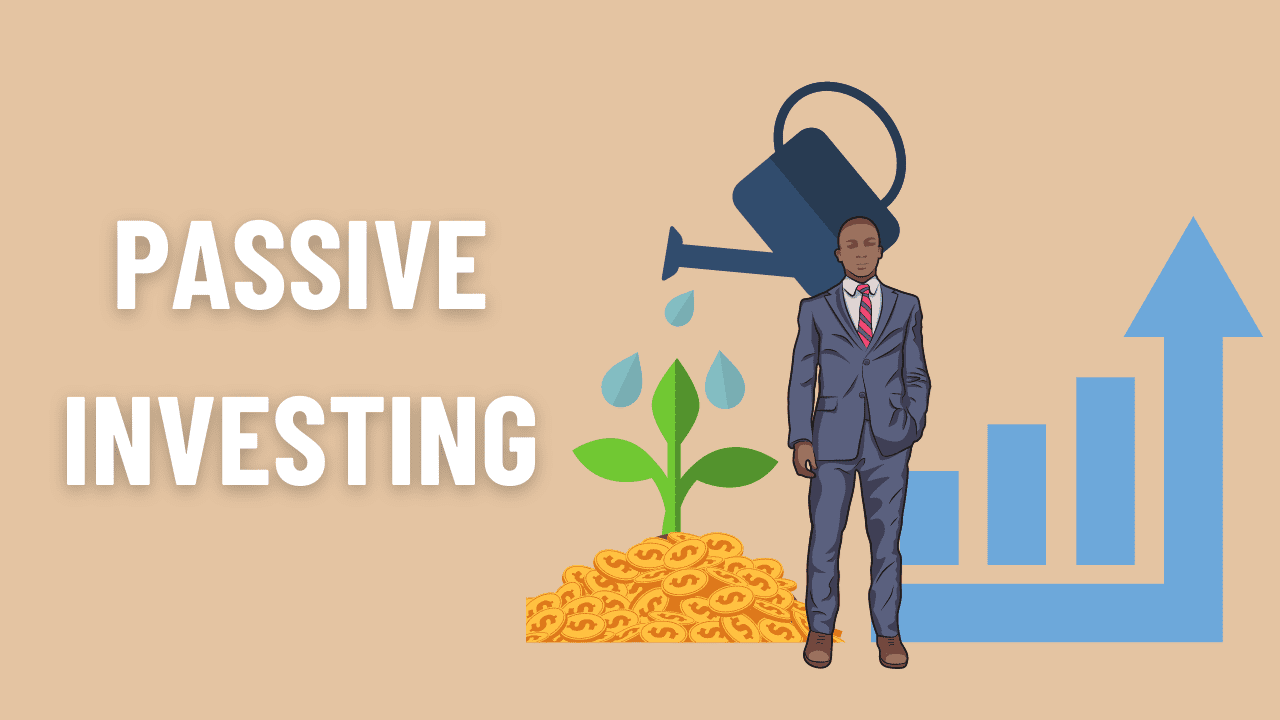What is Passive Investing and How Does it Differ from Active Investing?
Passive investing and active investing are two distinct investment strategies that individuals can employ to grow their wealth. While both approaches aim to generate returns, they differ in terms of the level of involvement and decision-making required from investors.
Passive investing involves building a portfolio that closely mirrors a specific market index, such as the S&P 500. Instead of actively selecting individual stocks or timing the market, passive investors seek to replicate the overall performance of the index. This strategy typically involves purchasing low-cost index funds or exchange-traded funds (ETFs) that track the targeted index. Passive investors often take a long-term view and prioritize diversification and broad market exposure over frequent trading.
On the other hand, active investing involves making specific investment decisions based on research, analysis, and market trends. Active investors aim to outperform the overall market by selecting individual stocks, bonds, or other assets they believe will perform well. They may engage in frequent buying and selling of securities in an effort to capitalize on short-term price fluctuations.
One key distinction between passive and active investing is the level of time commitment required from investors. Passive investing tends to be more hands-off, as it relies on the assumption that markets will generally rise over time. Active investing requires ongoing monitoring of investments and making adjustments based on changing market conditions.
Both passive and active investing have their pros and cons, depending on an individual’s financial goals, risk tolerance, and investment expertise. Passive strategies may offer lower costs due to reduced trading activity but rely heavily on broad market performance. Active strategies may provide opportunities for higher returns but require more time commitment and potentially higher transaction costs.
Understanding these differences between passive and active investing is crucial for individuals looking to make informed decisions about their long-term investments. By considering their own financial objectives and risk tolerance, investors can choose an approach that aligns with their goals while maximizing potential returns within their comfort zone.
Table of Contents
The Benefits of Passive Investing: Why It’s a Popular Choice for Many Investors
Passive investing has gained significant popularity among investors in recent years due to its numerous benefits. This investment strategy involves a hands-off approach, where investors aim to achieve long-term growth by closely mirroring the performance of a specific market index or benchmark. Let’s explore some of the key advantages that make passive investing an attractive choice for many individuals.
One of the primary benefits of passive investing is its low fees. Compared to actively managed funds, which involve higher management fees and transaction costs, passive investment strategies typically come with lower expenses. This cost efficiency can significantly impact an investor’s overall returns over time.
Diversification is another advantage associated with passive investing. By investing in index funds or exchange-traded funds (ETFs), investors gain exposure to a broad range of securities within a specific market segment or asset class. This diversification helps mitigate individual company risk and can lead to more stable long-term returns.
Passive investors also benefit from capturing market returns as they closely track the performance of an underlying index or benchmark. Instead of trying to outperform the market through active stock picking or timing strategies, passive investors aim to capture the overall upward trajectory of the market over time.
Furthermore, passive investing requires minimal effort and time commitment from investors. With a hands-off approach, individuals can avoid constantly monitoring their investments and making frequent trading decisions. This simplicity makes it an appealing choice for those who prefer a more relaxed investment approach or have limited knowledge about stock selection.
In conclusion, passive investing offers several advantages including low fees, diversification, capturing market returns, and requiring minimal effort from investors. These benefits have contributed to its growing popularity as individuals seek efficient ways to grow their wealth over the long term while minimizing costs and reducing active involvement in their investment decisions.
Passive Investment Vehicles: Exploring Index Funds and Exchange-Traded Funds (ETFs)

Passive investment vehicles such as index funds and exchange-traded funds (ETFs) have gained significant popularity among investors seeking a low-cost and diversified approach to investing. These investment options allow individuals to track a specific market index, providing exposure to a wide range of securities without the need for active management.
Index funds are mutual funds that aim to replicate the performance of a specific market index, such as the S&P 500 or the Dow Jones Industrial Average. They achieve this by holding a portfolio of stocks that closely mirrors the composition of the chosen index. By investing in an index fund, investors can gain broad market exposure and benefit from long-term growth potential.
On the other hand, ETFs are similar to index funds but trade on stock exchanges like individual stocks. ETFs offer flexibility as they can be bought and sold throughout the trading day at market prices. Like index funds, ETFs also aim to replicate the performance of a particular market index.
Both index funds and ETFs offer several advantages for passive investors. Firstly, they provide instant diversification across multiple securities within an asset class or sector. This diversification helps reduce risk by spreading investments across various companies or industries. Secondly, these investment vehicles often have lower expense ratios compared to actively managed mutual funds since they don’t require extensive research or active trading.
Furthermore, passive investment options like index funds and ETFs tend to have lower turnover rates compared to actively managed funds. This means fewer transactions occur within these vehicles, resulting in potentially lower capital gains taxes for investors.
It is important for investors considering these passive investment vehicles to carefully evaluate their investment objectives, risk tolerance, and time horizon before making any decisions. While both index funds and ETFs offer benefits such as broad market exposure and cost-efficiency, it is crucial for individuals to conduct thorough research and consult with financial professionals when building their investment portfolios.
The Role of Robo-Advisors in Passive Investing: How Technology is Changing the Investment Landscape
Robo-advisors have revolutionized the investment landscape by offering automated investing platforms that utilize algorithmic portfolio management. These digital platforms have gained popularity among investors seeking a more passive approach to their investment strategies.
Robo-advisors provide a convenient and cost-effective solution for individuals who may not have the time, knowledge, or resources to actively manage their investments. By leveraging sophisticated algorithms, these platforms can analyze various factors such as risk tolerance, financial goals, and market trends to create personalized investment portfolios.
One of the key advantages of robo-advisors is their ability to provide diversification and rebalancing on an ongoing basis. With automated portfolio management, investors can benefit from a disciplined approach that helps maintain an optimal asset allocation over time.
Furthermore, robo-advisors offer transparency and accessibility to investors of all levels. Users can easily track their portfolio performance and make adjustments as needed through user-friendly interfaces or mobile applications.
It is important to note that while robo-advisors offer convenience and cost-efficiency, they should not be seen as a replacement for human financial advisors. Rather, they complement traditional advisory services by providing an additional option for individuals looking for a more hands-off approach to investing.
As technology continues to advance, the role of robo-advisors in passive investing is expected to grow further. Investors can take advantage of these automated platforms to build diversified portfolios tailored to their individual needs while benefiting from the efficiency and objectivity offered by algorithmic portfolio management.
Pitfalls to Avoid in Passive Investing: Understanding the Risks and Limitations
When it comes to passive investing, there are certain pitfalls that investors should be aware of in order to effectively manage the risks involved. One of the key pitfalls is the concept of tracking error. This refers to the discrepancy between the performance of a passive investment strategy and its benchmark index. While passive investments aim to replicate the performance of an index, tracking error can occur due to various factors such as fees, transaction costs, and timing differences.
Another important pitfall in passive investing is the lack of control over individual investments. Unlike active investing where investors have the ability to select and manage their own portfolio holdings, passive investors rely on predetermined indexes or funds that may not align with their personal preferences or risk tolerance. This lack of control can limit an investor’s ability to make adjustments based on changing market conditions or individual investment opportunities.
It is crucial for passive investors to understand these pitfalls and take appropriate measures for risk management. This may involve diversifying investments across different asset classes or periodically reviewing and rebalancing portfolios to ensure alignment with long-term goals. Additionally, staying informed about market trends and regularly assessing investment strategies can help mitigate potential risks associated with passive investing.
Creating a Passive Investment Portfolio: Steps to Get Started with Your Long-Term Wealth Building Strategy

Creating a passive investment portfolio is an effective long-term wealth building strategy that can provide financial security and stability. By following a few key steps, individuals can embark on their journey towards building a well-diversified investment portfolio.
The first step is to determine your investment goals and risk tolerance. This involves assessing your financial objectives, time horizon, and comfort level with market fluctuations. Understanding these factors will help you determine the appropriate asset allocation for your portfolio.
Next, it is crucial to research and select suitable investment options. This may include stocks, bonds, real estate, mutual funds, or exchange-traded funds (ETFs). Each asset class carries its own level of risk and return potential. Diversifying across different asset classes can help mitigate risks and optimize returns.
Once you have chosen your investments, regularly monitoring and rebalancing your portfolio is essential. Rebalancing involves adjusting the allocation of assets to maintain the desired risk-return profile. This ensures that your investments stay aligned with your long-term goals even as market conditions fluctuate.
Additionally, it is important to consider the impact of fees on your portfolio’s performance. Researching low-cost investment options such as index funds or ETFs can help minimize expenses over time.
Lastly, staying informed about market trends and economic developments can aid in making informed decisions regarding your investment portfolio. Keeping up with financial news and seeking professional advice when needed can provide valuable insights into potential opportunities or risks.
By following these steps – determining goals and risk tolerance, selecting suitable investments, monitoring and rebalancing regularly – individuals can lay the foundation for a passive investment portfolio that supports their long-term wealth building strategy while minimizing unnecessary risks.
Embrace the Power of Passive Investing for Stable Long-Term Growth in Your Wealth Journey
Passive investing has emerged as a powerful strategy for individuals seeking stable long-term growth in their wealth journey. By embracing the power of passive investing, investors can benefit from a hands-off approach that minimizes active trading and instead focuses on long-term market trends.
One of the key advantages of passive investing is its ability to provide consistent returns over time. By tracking broad market indexes, such as the S&P 500, investors can capture the overall performance of the market rather than trying to beat it through active stock selection. This approach reduces the risk associated with individual stock picking and provides diversification across multiple companies and sectors.
Another benefit of passive investing is its cost-effectiveness. Traditional actively managed funds often come with higher fees due to the expertise and research involved in selecting stocks. In contrast, passive index funds or exchange-traded funds (ETFs) typically have lower expense ratios since they aim to replicate an index’s performance rather than actively manage a portfolio.
Furthermore, passive investing offers simplicity and ease of implementation. Investors do not need to constantly monitor their portfolios or make frequent adjustments based on short-term market fluctuations. Instead, they can set up an investment plan aligned with their long-term goals and let it grow steadily over time.
It is important to note that while passive investing can be highly effective for long-term growth, it does not guarantee success or protect against losses. Market volatility and economic downturns can still impact investment returns. Therefore, diversification across asset classes and regular portfolio rebalancing are crucial components of any investment strategy.
In conclusion, embracing the power of passive investing can provide individuals with stable long-term growth in their wealth journey. By harnessing broad market trends, minimizing costs, and simplifying investment strategies, investors can position themselves for potential success while enjoying greater peace of mind along the way.
Also Read: An In-Depth Introduction to Investing for Success: Unlocking Financial Growth

